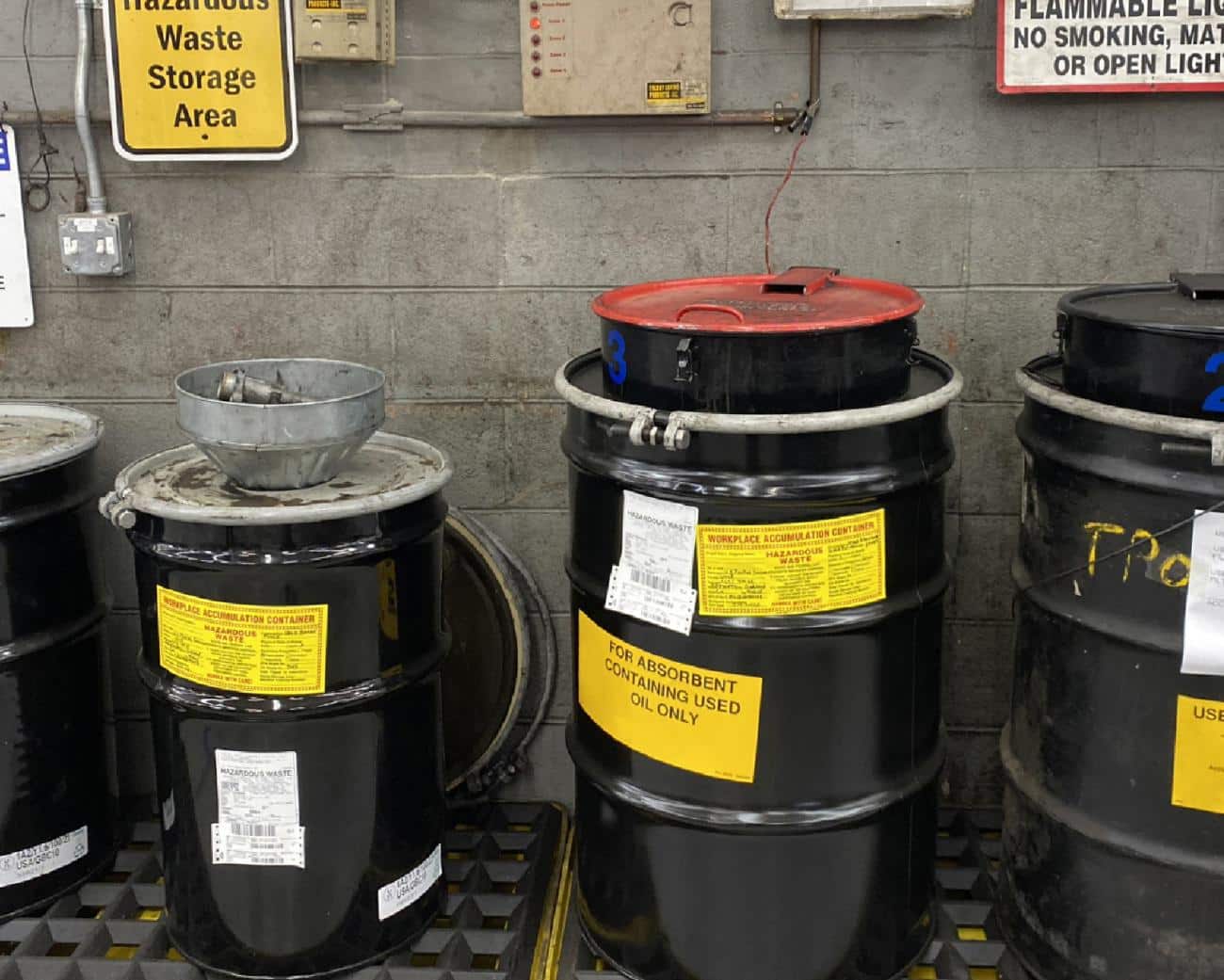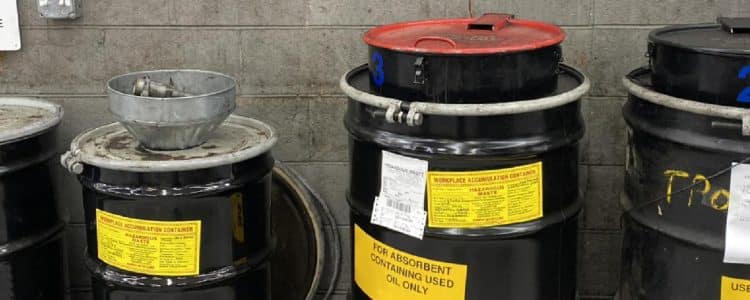
Background
Postal Service employees use a variety of hazardous materials in their daily activities that generate hazardous waste, which is subject to strict federal laws and regulations related to its proper management and disposal. Vehicle maintenance facilities (VMFs) generate hazardous waste as part of their normal operations. The waste is stored in central and satellite accumulation areas, aboveground storage tanks, and local storage for universal waste. Effective management of hazardous waste and related emergency response equipment is critical in reducing the risk of exposure that can cause damage to the environment and human health.
What We Did
Our objective was to assess the Postal Service’s effectiveness at managing hazardous waste and emergency response equipment at VMFs. We conducted site observations of hazardous waste and emergency response equipment at 16 VMFs designated by state-specific regulations as large quantity generators of hazardous waste. These 16 VMFs are all located in California and Massachusetts. Also, we visited three additional judgmentally selected VMFs in these two states and interviewed Postal Service Headquarters officials, VMF management, and employees.
What We Found
Opportunities exist to improve the Postal Service’s hazardous waste program and the maintenance of emergency response equipment at the 19 VMFs visited. We found management did not (1) consistently follow procedures on storing, identifying, and handling hazardous waste; (2) effectively maintain emergency eyewash and shower equipment; or (3) place designated smoking areas for employees in locations 25 feet or more away from buildings.
Recommendations
We recommended management implement oversight procedures to verify (1) weekly and monthly hazardous waste inspections are performed; (2) applicable VMF personnel complete the required annual hazardous waste training; and (3) weekly testing and monthly/annual inspections of emergency eyewash and shower equipment are performed. We also recommend management (4) provide applicable training on testing and inspecting emergency eyewash and shower equipment, as required in relevant Maintenance Management Orders to responsible personnel; and (5) enforce existing policy for designated smoking areas to be more than 25 feet from oil storage or other operations involving flammable liquids or gases.
Read full report:
Source: USPS OIG

